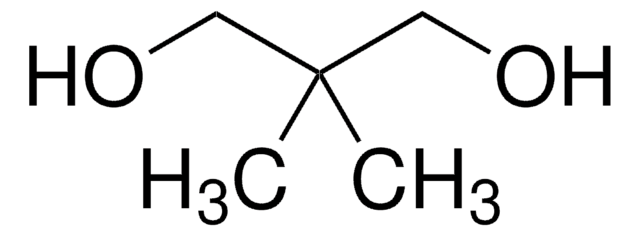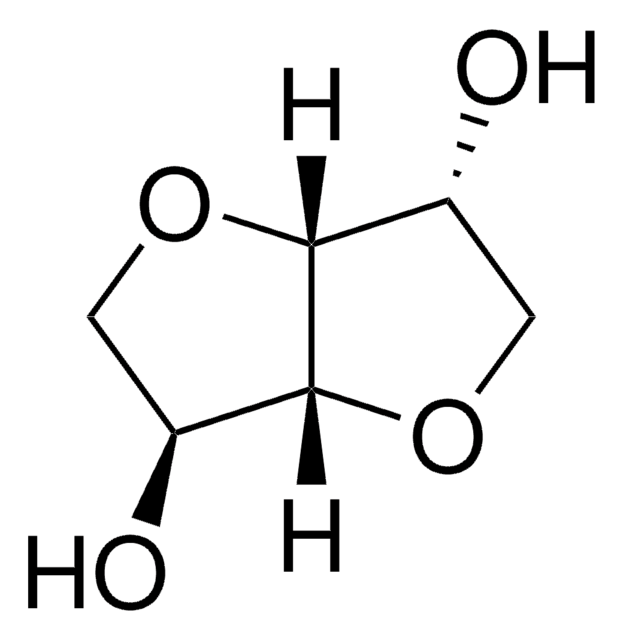125598
1,4-Cyclohexanedimethanol
mixture of cis and trans, 99%
Sinónimos:
1,4-Bis(hydroxymethyl)cyclohexane, mixture of cis and trans
Iniciar sesiónpara Ver la Fijación de precios por contrato y de la organización
About This Item
Fórmula lineal:
C6H10(CH2OH)2
Número de CAS:
Peso molecular:
144.21
Beilstein:
1902271
Número CE:
Número MDL:
Código UNSPSC:
12352100
ID de la sustancia en PubChem:
NACRES:
NA.22
Productos recomendados
densidad de vapor
5 (vs air)
Nivel de calidad
Ensayo
99%
temp. de autoignición
584 °F
bp
283 °C (lit.)
grupo funcional
hydroxyl
cadena SMILES
OCC1CCC(CO)CC1
InChI
1S/C8H16O2/c9-5-7-1-2-8(6-10)4-3-7/h7-10H,1-6H2
Clave InChI
YIMQCDZDWXUDCA-UHFFFAOYSA-N
Categorías relacionadas
Descripción general
1,4-Cyclohexanedimethano is extensively used as cross-linking reagent in polymer industry.
Aplicación
1,4-Cyclohexanedimethanol has been used in the synthesis of polyketal copolymers. It was used as diol comonomer during the synthesis of polyester-carbonates based on 1,3-propylene-co-1,4-cyclohexanedimethylene succinate.
Palabra de señalización
Danger
Frases de peligro
Consejos de prudencia
Clasificaciones de peligro
Eye Dam. 1
Código de clase de almacenamiento
11 - Combustible Solids
Clase de riesgo para el agua (WGK)
WGK 1
Punto de inflamabilidad (°F)
321.8 °F - closed cup
Punto de inflamabilidad (°C)
161 °C - closed cup
Equipo de protección personal
Eyeshields, Gloves, type N95 (US)
Elija entre una de las versiones más recientes:
¿Ya tiene este producto?
Encuentre la documentación para los productos que ha comprado recientemente en la Biblioteca de documentos.
Los clientes también vieron
Pingfan Li et al.
Chemical communications (Cambridge, England), (36)(36), 5412-5414 (2009-09-03)
The silica gel absorbed amino acid salt catalyzed asymmetric intramolecular Robinson annulation reaction has been developed; up to 97% ee was obtained with this readily recoverable organocatalyst.
Pu Wang et al.
Biomaterials science, 6(5), 1262-1270 (2018-04-17)
One of the major challenges in anticancer therapy is the poor penetration of anticancer drugs into tumors, especially in solid tumors, resulting in decreased therapeutic efficacy in vivo. To solve some of these problems, in this study, a dual-responsive polymeric
S L Sendelbeck et al.
Drug metabolism and disposition: the biological fate of chemicals, 13(3), 291-295 (1985-05-01)
Disposition of the 14C-labeled bioerodible polymer poly(2,2-dioxy-cis,trans-1,4-cyclohexane dimethylene tetrahydrofuran) (ALZAMER C101ct) and its ultimate hydrolysis products, 4-hydroxybutyrate (4HB) and cis,trans-1,4-bis(hydroxymethyl)cyclohexane (CHDM), was assessed in vivo in rats 24 hr after sc administration of the 14C-labeled polymer or hydrolysis products. The
Eric J Moskala
Medical device technology, 14(3), 12-16 (2003-06-07)
Gamma irradiation affects colour, most notably b, and total transmittance of all of the copolyesters used in this study. The changes in colour and total transmittance increase with increasing dose level and CHDM content of the copolyester. These changes are
Mingliang Ding et al.
Biodegradation, 23(1), 127-132 (2011-07-07)
Enzymatic hydrolytic degradation of polybutylene succinate (PBS), poly(polybutylenesuccinate-co-1,4-cyclohexane dimethanol) (PBS/CHDM) and poly(polybutylene succinate-co-diglycolic acid) (PBS/DGA) in mixed solvent of tetrahydrofuran (THF) and toluene was examined. Lipase was used as catalyst to degrade polymers with molecular weight of more than 100,000
Nuestro equipo de científicos tiene experiencia en todas las áreas de investigación: Ciencias de la vida, Ciencia de los materiales, Síntesis química, Cromatografía, Analítica y muchas otras.
Póngase en contacto con el Servicio técnico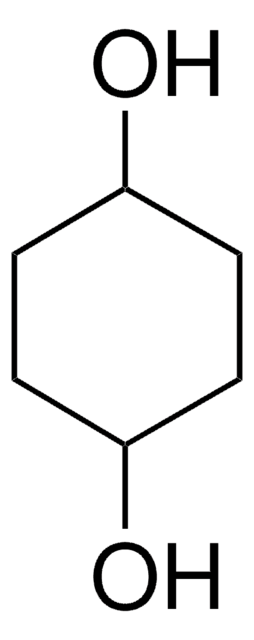

![4,8-Bis(hydroxymethyl)tricyclo[5.2.1.02,6]decane, mixture of isomers 96%](/deepweb/assets/sigmaaldrich/product/structures/973/006/555dc1f2-c191-4d54-9aea-19fd4c3544a2/640/555dc1f2-c191-4d54-9aea-19fd4c3544a2.png)
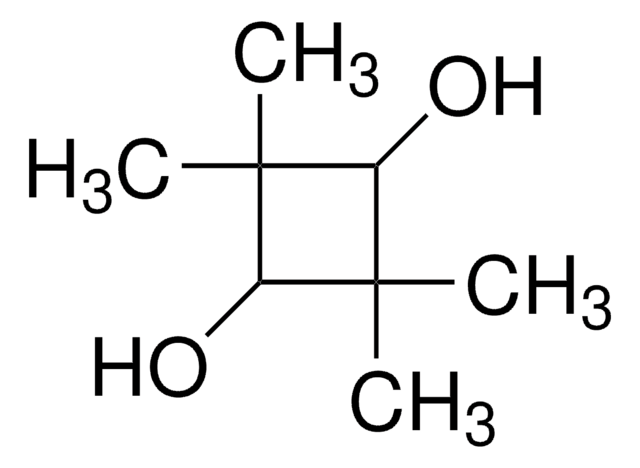
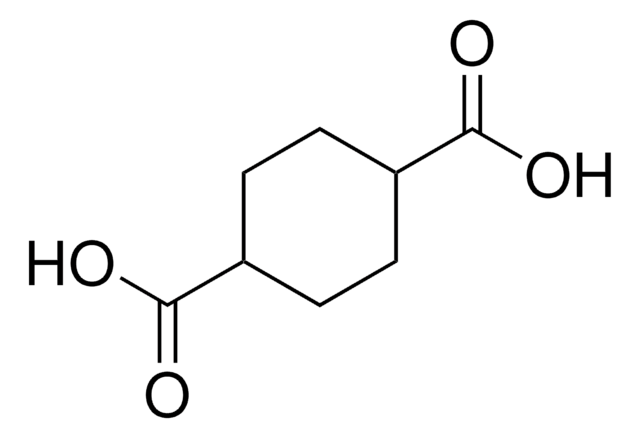
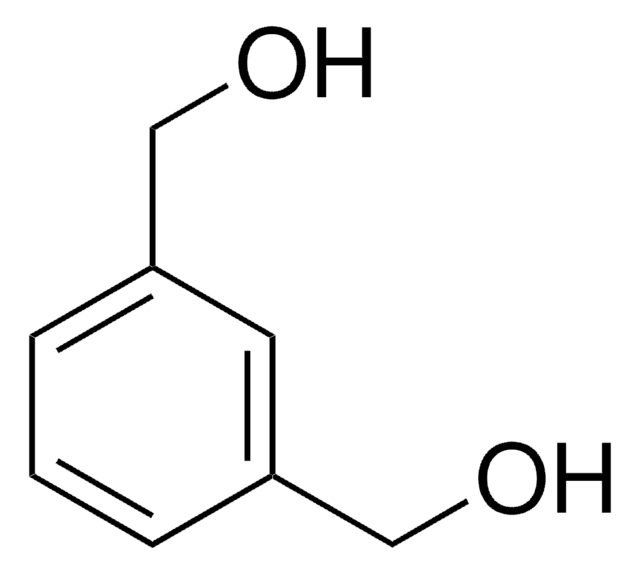
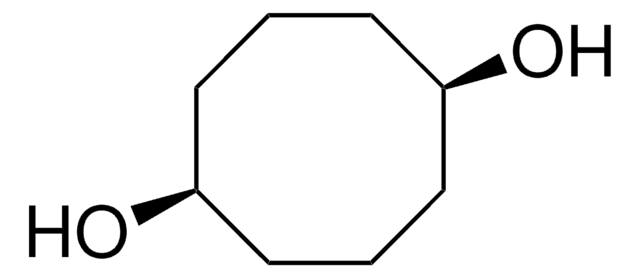
![Tricyclo[5.2.1.02,6]decanedimethanol diacrylate](/deepweb/assets/sigmaaldrich/product/structures/327/536/0dc81542-b920-47ec-99c1-d064a327a315/640/0dc81542-b920-47ec-99c1-d064a327a315.png)
